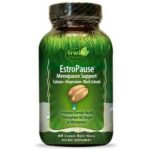Is 1 mg of Estradiol A Low Dose?

Menopause is a point in time 12 months after a woman’s last period. The years leading up to that point, when women may have changes in their monthly cycles, hot flashes, or other symptoms, are called the menopausal transition or perimenopause.
The menopausal transition most often begins between ages 45 and 55. It usually lasts about seven years but can be as long as 14 years. Around the time of menopause, many females experience physical symptoms such as hot flashes, night sweats, vaginal dryness, and a reduced sex drive. It can also lead to anxiety, changes in mood, and a reduced sex drive.
These symptoms may start before menstruation ends, and they can last for several years. The impact on a person’s quality of life can range from mild to severe because the body begins to use energy differently, fat cells change, and women may gain weight more easily. You may experience changes in your bone or heart health, your body shape, and composition, or your physical function.
What is estradiol?
Estradiol is a female sex hormone (estrogen) that regulates many processes in the body. It is available as an oral tablet, a topical gel or patch, vaginal cream, or as an injection.
Estradiol is used to treat menopause symptoms such as hot flashes and vaginal changes, and to prevent osteoporosis (bone loss) in menopausal women. Estradiol is also used to treat low estrogen levels in women with ovarian failure. It is also indicated to treat certain types of breast cancer and prostate cancer.
How should I take estradiol?
Take estradiol exactly as it was prescribed for you. Follow all directions on your prescription label. Do not take this medicine in larger amounts or for longer than recommended.
Estradiol may increase your risk of developing uterine cancer. To help lower this risk, your doctor may also want you to take a progestin. Report any unusual vaginal bleeding to your doctor immediately.
Your doctor should check your progress on a regular basis (every 3 to 6 months) to determine whether you should continue this treatment. Self-examine your breasts for lumps on a monthly basis and have a mammogram every year while using estradiol.
If you need major surgery or will be on long-term bed rest, you may need to stop using this medicine for a short time. Any doctor or surgeon who treats you should know that you are using this medicine.
Store at room temperature away from moisture, heat, and light. Keep the bottle tightly closed when not in use.
If you are taking injectable estrogen, dispose of any needles and syringes in an appropriate sharps container per your state laws. Do not throw away used needles into the garbage.
If you are using estradiol spray, avoid fire, flame, or smoking until the spray has dried. Do not apply lotion or sunscreen over the area for at least one hour.
Is 1mg estradiol a low dose?
No, the dose of estradiol prescribed for you will depend on the condition being treated and the type of product. In general, the typical dose of estradiol ranges from 0.5 mg to 10 mg and will be different for different patients. Follow your doctor’s orders or the directions on the label. The amount of medicine that you take depends on the strength of the medicine. Also, the number of doses you take each day, the time allowed between doses, and the length of time you take the medicine depend on the medical problem for which you are using the medicine.
What are the side effects of estradiol?
Estradiol may cause side effects, and eating certain types of food may also increase the risk of side effects and affect how the medication works. Tell your doctor if any of these symptoms are severe or do not go away:
• headache
• breast pain or tenderness
• nausea
• diarrhea
• constipation
• gas
• heartburn
• weight gain or loss
• mood changes
• depression
• nervousness
• sleepiness
• difficulty falling asleep or staying asleep
• changes in sexual desire
• back pain
• runny nose
• cough
• flu-like symptoms
• hair loss
• unwanted hair growth
• darkening of the skin on the face
• difficulty wearing contact lenses
• irritation or redness of the skin where you applied topical estradiol
• swelling, redness, burning, irritation, or itching of the vagina
• vaginal discharge
Some side effects can be serious. If you experience any of these symptoms, call your doctor immediately:
• bulging eyes
• yellowing of the skin or eyes
• itching
• loss of appetite
• fever
• joint pain
• stomach tenderness, pain, or swelling
• movements that are difficult to control
• hives
• rash or blisters on the skin
• swelling, of the eyes, face, lips, tongue, throat, hands, feet, ankles, or lower legs
• hoarseness
• wheezing
• difficulty breathing or swallowing
Estradiol may increase your risk of developing cancer of the ovaries and gallbladder disease that may need to be treated with surgery. Talk to your doctor about the risks of using this medication.
Estradiol may cause other side effects. Call your doctor if you have any unusual problems while taking this medication.
If you experience a serious side effect, you or your doctor may send a report to the Food and Drug Administration’s (FDA) MedWatch Adverse Event Reporting program online (http://www.fda.gov/Safety/MedWatch) or by phone (1-800-332-1088).





